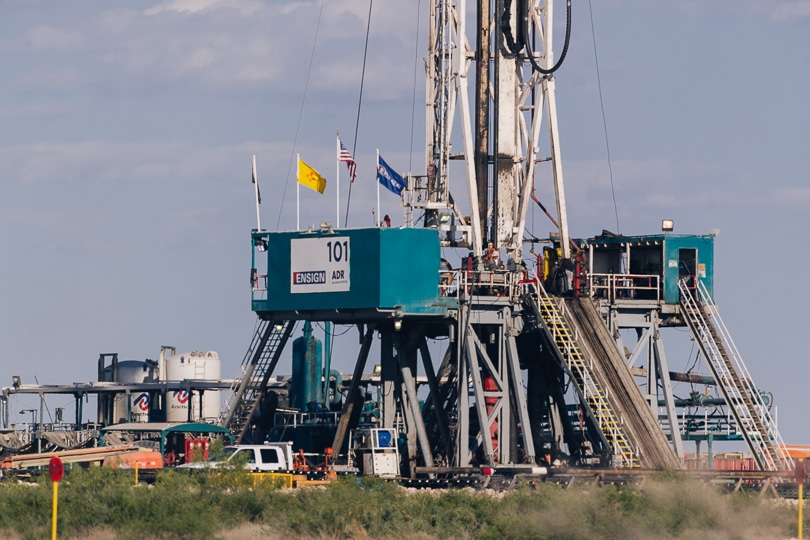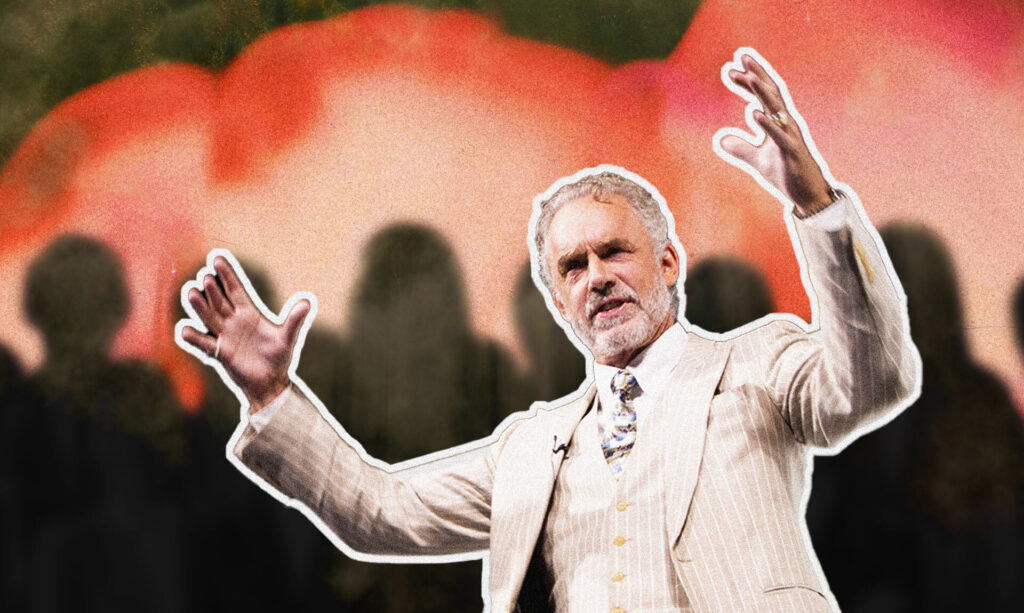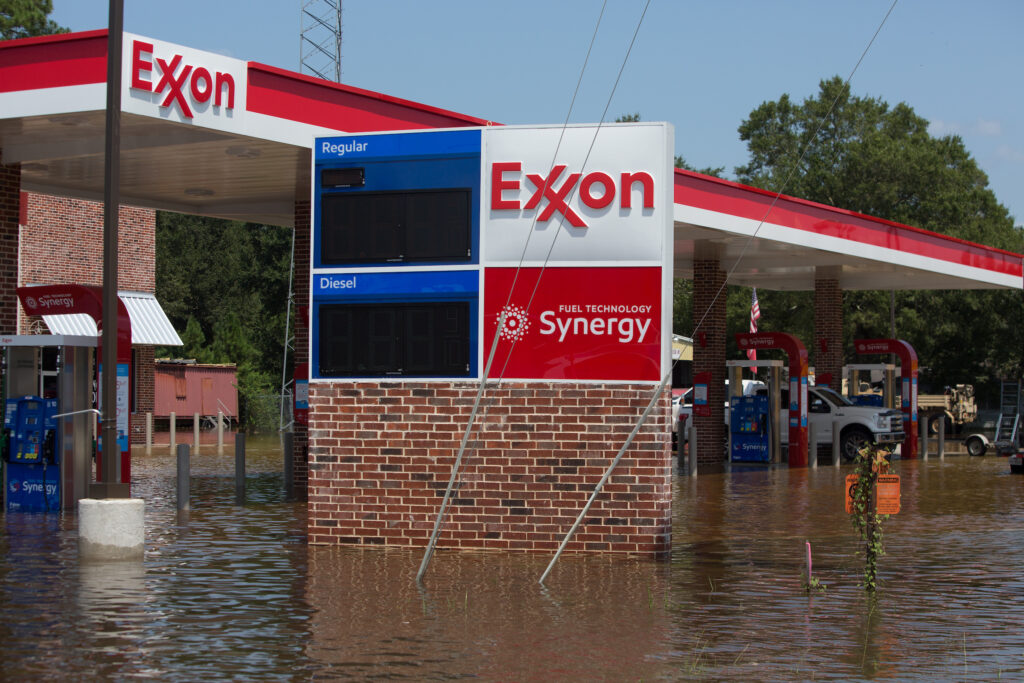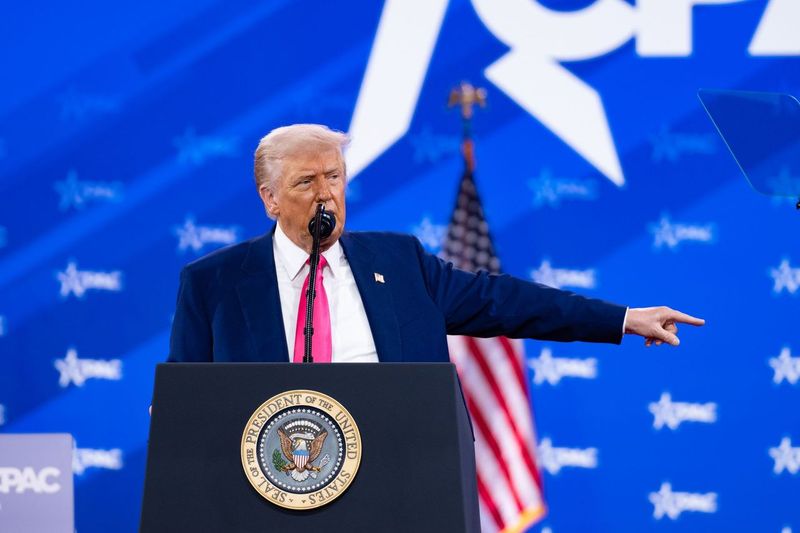By Jerry Redfern, Capital and Main. This story originally appeared in Capital and Main and is republished here as part of Covering Climate Now, a global journalism collaboration strengthening coverage of the climate story.
For nine years, the U.S. Bureau of Land Management has wrangled through an update to oil and gas permitting procedures for the San Juan Basin in northwestern New Mexico. The update was sparked by decades old changes in drilling technology already used in an area that gained notoriety for having one of the largest methane hot spots on the planet — because of leaking oil and gas wells.
In February 2020, BLM and the U.S. Bureau of Indian Affairs together released a set of four update possibilities. All four have been roundly panned by government agencies, environmental groups, tribal governments, Native American organizations and the public at large. Even so, the two agencies will announce which option they’ve chosen as their final plan next month.
“I really don’t know what they’re thinking,” says Robyn Jackson of Diné CARE, a nonprofit group that works on energy and environmental issues on the Navajo Nation. “We have not had respectful communication,” she says of the relationship with the two federal agencies. “They honestly seem like they are not listening at all to the complaints that are brought forward.”
The stakes are high for people living in the northwest corner of the state, because the plan could allow as many as 3,650 new oil and gas wells in the area, 1,650 of which would be along the southern rim of the basin, including around Chaco Culture National Historical Park and sprinkled throughout the surrounding Navajo communities.
Whichever update the BLM and BIA choose will have to take account of an array of competing goals.
The BLM’s mission is to manage its lands for multiple uses and “to sustain the health, diversity and productivity of public lands.” The vast majority of people who commented on the plan say that BLM is overly focused on the last point — productivity — at the expense of environmental protections and cultural preservation. On top of that, the region is a traditional homeland to both Navajo and Pueblo people, and the land itself is a mix of federal, tribal and mixed-ownership lands, all adding to the complexity of any plan.
BLM spokesperson Jillian Aragon declined interview requests for this article, saying that the agency isn’t commenting on pending policies while management in Washington, D.C., is still in transition. She also says the agency and BIA are still conducting National Historic Preservation Act consultations and referred all other questions to the two agency’s two-volume, 1,000-page draft plan.
Representatives from BIA didn’t return multiple calls for comment.
If the plan rolls out as scheduled, it will be one of the first major decisions to be announced by Deb Haaland, the incoming Secretary at the Department of Interior. In that role, she will be the head of both the BLM and BIA. Haaland is an enrolled member of the Pueblo of Laguna Native American tribe, which sits about 100 miles southeast of Chaco Park, and, as she pointed out in her campaigns for Congress, she is a 35th-generation New Mexican.
As a Congressperson, she supported the Green New Deal, a position that drew fire from right-wing Western politicians at her confirmation hearings earlier this month. And she sponsored legislation to protect Chaco Park from encroaching oil and gas development. “By keeping Chaco from being destroyed by the fossil fuel industry, future generations will have access to this special place,” she said at the time.
* * *
Navajo and non-Native American residents living nearby are frustrated with a perceived lack of oversight and regulatory enforcement of the oil and gas development already in the area, says Jackson. In the checkerboard of private, BLM and tribal lands in the San Juan Basin, homes and even schools are often next to wellheads, pipelines, tanks and flares.
“You go out there and you go near a big flare — and it stinks,” Jackson says. Being around the fumes from the wells leaves her and others nauseated. “It’s to me horrifying to think about people living with that constantly.”
Mike Eisenfeld of the environmental group the San Juan Citizens Alliance says, “We’ve been trained up here to think nothing of wells in parks, next to our schools, in our neighborhoods and our subdivisions.”
Even so, it’s hard to ignore the industry next door, especially when it has an accident.
Mario Atencio is a legislative district assistant with the Navajo Nation Council. His grandparents live just outside Chaco Culture National Historical Park near a wellsite where approximately 1,100 barrels of produced water and another 300 barrels of oil spilled into an ephemeral stream, which flows intermittently from rainfall and melting snow, near their home in 2019. According to the incident report filed with the New Mexico Oil Conservation Division, the company responsible, Enduring Resources of Denver, recovered almost none of the spilled liquids after they mixed with snowmelt and washed downstream toward the national park before seeping into the streambed.
“You’re talking about one of the most sacred landscapes,” Atencio says.
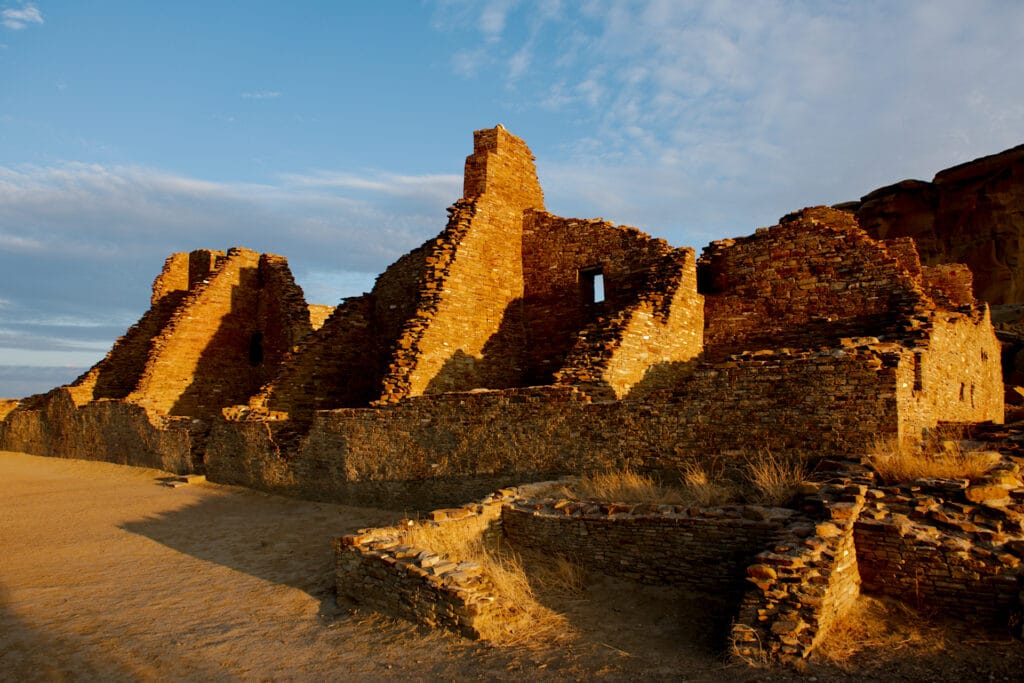
While many people think of Chaco as ancient stone buildings in a park, Native American people and archaeologists understand that Chaco is in the land. It includes the ancient ruins, petroglyphs, surrounding mesas, pre-Columbian roads that crisscross the area and outlying buildings miles from the center of the park — all of which form the Greater Chaco region.
“This is our homeland, and we want to live here for generations going forward,” says Jackson. “So we still want these issues to be addressed.”
Those issues are myriad. Jackson talks of preserving the national park and also the health impacts of living near oil and gas development. Not only that, but some Navajo people want oil and gas development while others don’t. Then there are the long-term effects on air and water quality and the environment as a whole. The agencies haven’t properly discussed these issues in culturally appropriate ways, she says. And she believes the federal agencies should listen more carefully to the people who have lived in the region for centuries — and who still live there today.
“It’s probably not all that different from a lot of how colonization has played out over the years,” says Jackson. “These issues are still important for us.”
The update process began under the Obama administration and its “all of the above” oil and gas push, then continued through the Trump administration, which had an even more friendly attitude toward the petroleum industry. As such, the plan options reflect those administrations’ hopes and not the very different direction set so far by President Joe Biden, who within days of taking office issued an executive order on climate change and an executive memorandum on tribal consultation and strengthening nation-to-nation relationships.
In developing the four possible updates, the two agencies followed a list of guidelines. First on the list? “Provide for development of the oil and gas resources.” Avoiding impacts to cultural sites “to the extent possible” is 10th on the list.
It is in the land beneath and around Chaco where these two goals come into greatest conflict. The zones of petroleum in the San Juan Basin run in a series of east-west bands, and the southernmost bands run beneath the park. Different plan alternatives create a drilling buffer of two to 10 miles from the edges of the park’s boundary. But none of the alternatives propose no drilling at all within the wider area.
Historically in the northern bands, operators drilled primarily for natural gas. But larger oil deposits lie in the band running beneath Chaco. Developing wells there wouldn’t mean just drilling, but also adding additional trucking roads and possibly a pipeline to get that larger flow of oil to market.
Many of the comments lodged with the BLM and BIA expressed worry about increased drilling operations disturbing this land with new roads, well pads, pipelines and traffic.
“One thing I really want to highlight is there is supposed to be final guidance regarding environmental justice issues,” Atencio says. “And that’s never ever been given to us.”
* * *
By the time the public comment period ended in September 2020, people and organizations had sent BLM and BIA more than 35,000 comments and suggestions on the proposed plan revisions. The comments came in letters, phone calls and emails, and the response was overwhelmingly negative. From sovereign tribal governments across the region to the governor of New Mexico, all called for a serious rethinking of the options.
In a letter to BLM last September, Gov. Michelle Lujan Grisham wrote that the plans do not properly address environmental and tribal concerns, and they lack “essential alternatives.”
“These flaws are in part the result of inadequate tribal consultation, an inadequate public input process, and an incomplete cultural resources survey,” she wrote.
Under federal law, agencies are required to conduct tribal consultation on projects and plans like this one. And according to the draft plan, the BLM and BIA are supposed to provide opportunities to tribal governments “to participate meaningfully and substantively” in the development process.
But of the intermittent meetings over the years, Mike Eisenfeld says, “It was like Bill Murray’s Groundhog Day. You know, we’ve had this meeting before.” He and others say that inviting people to attend repeated meetings to watch BLM or BIA presentations is substantially different from holding conversations with local stakeholders to develop plans.

Oil and gas development wasn’t always the biggest issue. “People saying that oil and gas is a part of the multiuse — we understand that,” says Atencio. “But in meaningful consultation.” For him and others, meaningful consultation includes giving equal time and weight to the stories and concerns of tribal elders who are living links to these traditional lands for these communities.
But then, the meetings culminated last year in a series of in person public forums that began around the start of the pandemic, a fraught time for tribes, particularly the Navajo Nation, where COVID-19 was especially deadly.
“Some of these elders are basically national treasures to all the tribes,” says Atencio. “Asking them to come out to meetings and get out of the house and start moving into the community was very tone deaf.”
It’s not only the Navajo Nation who pushed back on this.
“I cannot impress upon you enough the harm done to our Pueblo communities forever due to the passing of a single tribal member who may possess critical cultural responsibilities, knowledge, or language,” wrote J. Michael Chavarria, chairman of the All Pueblo Council of Governors. “As such, many of APCG’s member Pueblos are maintaining significant closures in the best interest and for the safety of their people and way of life.”
And in a part of the country with notoriously poor Internet access, input and discussion became even more difficult with a shift to online meetings.
“The use of virtual meetings does not constitute ‘meaningful consultation’” Atencio’s boss, Daniel E. Tso, chairman of the Navajo Nation’s Health, Education and Human Services Committee, wrote in his comments to the BLM and BIA.
* * *
Even longer than the update process itself is the history of how and why an update is needed.
Nearly two decades ago, the San Juan Basin was considered tapped out. A 2014 report included in the BLM and BIA proposal notes that by 2004, eight decades of production in the San Juan Basin had left the area’s petroleum reservoirs “approaching depletion” and “marginally economic.” Last year, the BLM and BIA called the region “fully developed” in the introduction to the management plan. The experts agreed: The basin essentially had run out of reachable oil and gas.
That paradigm changed with the advent of multistage horizontal fracking in the early 2000s. The technology allows for multiple bores from the same well head, reaching miles in different directions, breaking open deposits of oil and gas in so-called tight rock formations.
In 2012, the BLM office in Farmington determined that the updated fracking technology could make the region once again economically viable for production, and the agency commenced its nine-year quest for a management plan update, joining with the BIA in 2016.
In the meantime, drilling slowed but never stopped.
A 2008 crash in gas prices coupled with the new fracking technology turned many drillers to oil production — though at nowhere near the rate or size of the Permian Basin in the opposite corner of the state. More than 600 oil and gas wells have been drilled in the San Juan Basin since mid-2012, and there are several dozen already within five miles of Chaco’s national park boundaries. In fact, the wellsite spill near Atencio’s grandparents’ home was drilled in 2017.
For much of the past 20 years, the basin has been a methane hot spot as the potent greenhouse gas leaks from wells. The massive emissions show up as a bright red dot, half the size of Connecticut, on satellite scans of the continental U.S. Those emissions push New Mexico to the top tier of greenhouse-gas-emitting states.
And yet the area remains deeply culturally significant to both Navajo and Pueblo people. “These issues are still important for us,” says Jackson. “We care about all the living creatures that we live amongst, that we share a home with.
“And we have to do our part in taking care of our homeland. We have to think about the future and do what we can. And so that’s what keeps us going forward.”
In the meantime, Jackson and everyone else in the San Juan Basin wait for April to hear how the BLM and BIA will manage their future.
Subscribe to our newsletter
Stay up to date with DeSmog news and alerts


